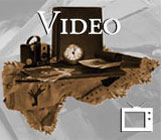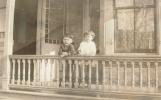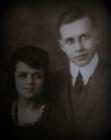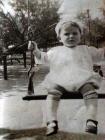1
Bruce Aikenhead: A Canadian Space Pioneer; a Youth Film Project of the Okanagan Science Centre, 201315 April 2013
Vernon, British Columbia
 Credits:
Credits:Bruce Aikenhead & Family
Ryan Cunningham
Alya Ramadan
Okanagan Science Centre
3
Bruce Alexander Aikenhead was born in Didsbury, Alberta on September 22nd, 1923.6
Aikenhead (on left) with his sister Audrey, on the porch of their grandparents' home1928
London, Ontario

7
Aikenhead with his father, Harold, and grandfather, Albert, in his grandparents' backyard1928
London, Ontario

8
Aikenhead's interest in aeronautics began in late August 1929 when his father took him to see the Graf Zeppelin fly across the Detroit River as it continued its journey back to Germany, as part of its three week journey around the world. The Graf Zeppelin was a German-built 'lighter than air' craft that contained several large hydrogen-filled bags that provided lift to the vessel. The Graf Zeppelin was 245 metres long and could reach speeds of 130 km/hr.A few years later, Aikenhead was given a picture book about 'flying-boat' airplanes. One of these airplanes, the Dornier DO-X, captivated him and really developed his interest in aviaton.
By the time Aikenhead was twelve, his interest had shifted to the prinicples of flight and how design and engineering helped to achieve lift. Around the same time, Aikenhead started to learn about electrical laws and circuits. He and a friend became fascinated with the ignition coils of old cars, and would power them with toy-train transformers instead of a 6-volt battery to make sparks fly!
9
Aikenhead's recollection of viewing the Graf Zeppelin with his father in 1929Windsor, Ontario
One of my earliest memories, the view, looking straight up, of the enormous Zeppelin as it flew overhead at quite a low altitude and it seemed to be very close.
Because I was not quite 6 years old, it made a very lasting impression:
I could see its gondola with many windows and there were faces in most of them, looking down at us. I could see and hear the engines and propellers suspended from the underside and also saw some coloured lights.
My father and I were standing in a field beside the Detroit River (we were living in Windsor, Ontaio) and were there to watch the Zeppelin as it flew across the river on its way to Akron, Ohio.
I was well-prepared for the viewing as we had been following the newspaper reports of the Graf Zeppelin's flight from Germany to Siberia to Japan, then across the Pacific to San Francisco. Then it flew to Chicago and Detroit. It was of great interest to us because there were letters on board it for us!
Dad was a stamp collector and he had bought the special stamps that had been issued to recognize the flight and had sent several letters to everyone in our family. The letters had been mailed in Detroit to be put on board the Zeppelin.
On a wall in our house we had put up a map of the world and Dad had made a little silver paper Zeppelin that could be pinned to the map. Each day we would move our Zeppelin to where the papers said that the real one had been.
When the Graf Zeppelin finally completed its voyage in Europe, all the letters on board were taken to a post office for delivery. I remember that it took quite a while but we finally got all of our cards and letters.
10
Aikenhead recalls seeing the Graf Zeppelin as a child15 April 2013
Vernon, British Columbia
 Credits:
Credits:Okanagan Science Centre
11
One of many stamps collected by Aikenhead's father commemorating the Graf Zeppelin's voyage1930
United States

12
In April 1941, Aikenhead's high school prinicpal announced that the government was establishing a plan for producing more technicians for wartime factories and the armed forces.He enrolled as a student at Westdale Technical School in Hamilton Ontario, in Radio Fundamentals and Servicing. Students in this course were paid $7.00/week, a respectable wage for students at the time. During the 8-month course, students were first taught the theory of electricity, magnetisism,and radio fundamentals and servicing, then provided hands-on workshop experience, and then built simple radios.
13
Aikenhead describes his time at Westdale Technical School in Hamilton, Ontario15 April 2013
Vernon, British Columbia
 Credits:
Credits:Okanagan Science Centre
14
Aikenhead listening to Morse Code during a lesson at London South Collegiate Institute (High School)1940
London, Ontario



